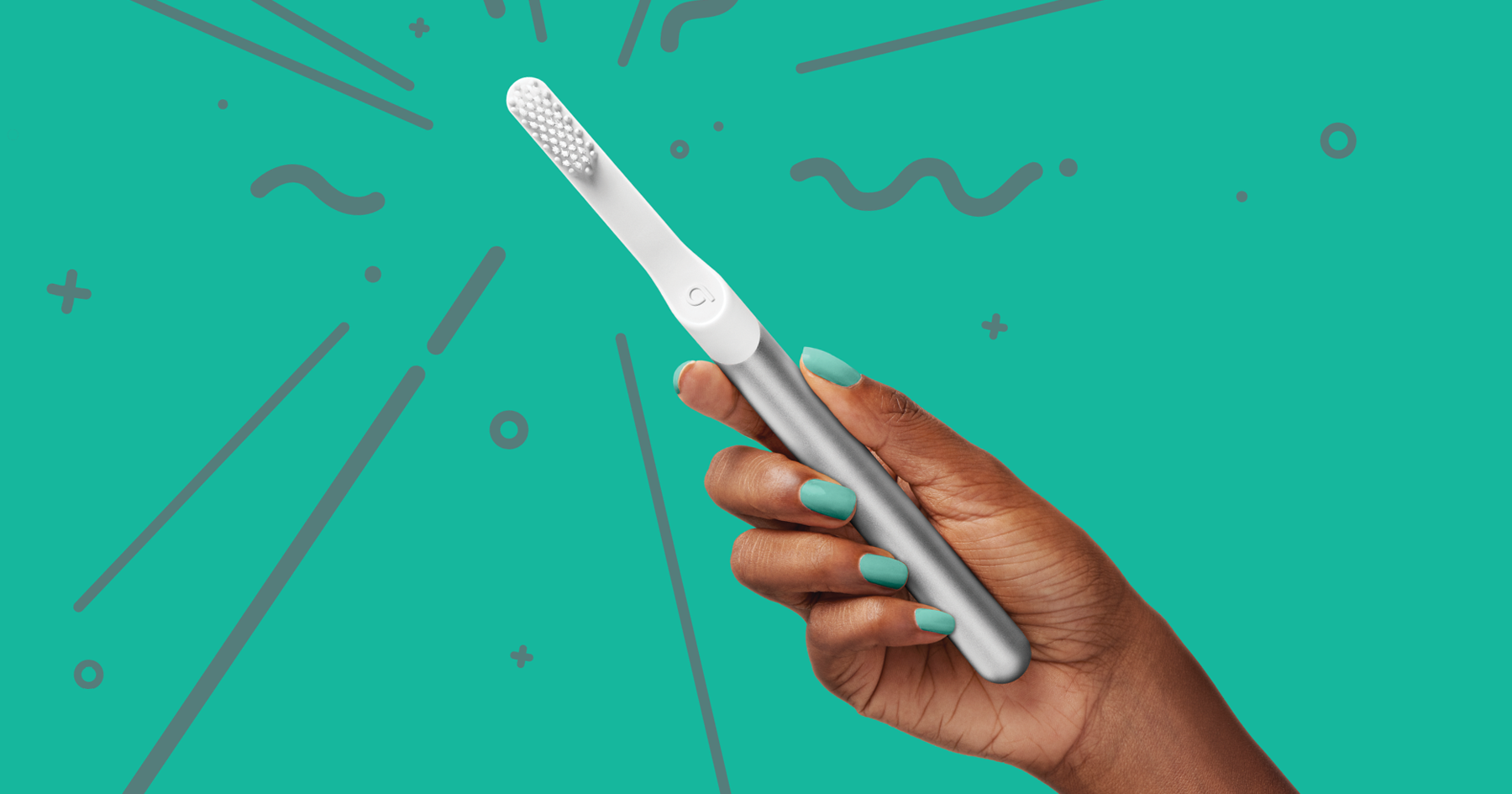
If you have sensitive teeth or sensitive gums, consider looking at the types of brush heads that you can get for your electric toothbrush. If you want to easily track your oral hygiene habits, go for a Bluetooth-enabled toothbrush with an app. If you need help brushing for the dentist-recommended two minutes, it’s a good idea to select one with a built-in smart timer.
#QUIP GUM REVIEW MANUAL#
Many people won’t want to spend more than $40 or so on a toothbrush, but if you’ve got extra money to spend on your pearly whites, investing in a higher-ticket toothbrush in the $100 to $200 range with more features may be worth it in the long run, especially if it helps you have fewer cavities and dentist visits.Ĭapabilities: What do you need the toothbrush to do? Maybe you just need one mode for cleaning a little deeper than you can with a manual toothbrush. When looking for the best electric toothbrush, you’ll want to consider a few factors.Ĭost: First things first: What’s your toothbrush budget? On the lower end, you can get a cheap electric toothbrush for $20 to $50, but the cons are that they won’t have certain features such as a lithium-ion battery, a water flosser or a sensor.

#QUIP GUM REVIEW HOW TO#
But regardless of which brush you choose, don’t forget to floss! How to choose the best electric toothbrush Our electric toothbrush comparison walks you through nine high-end products for cleaning your teeth, gingivitis, teeth whitening and more.

Before you start shopping for the best electric toothbrush for oral care, check out this guide featuring our electric toothbrush reviews. We get it, the choice can be overwhelming.

Would you prefer to spend a little more on a powerful model that does extra work for you, or stick to something simple and classic? You’ll also want to consider your budget. Do you want to focus on plaque control, oral hygiene or teeth whitening? Do you have sensitive gums or teeth? Are you looking for a 2-minute timer? (Dentists recommend brushing your teeth for 2 minutes twice a day with a soft toothbrush head.) So how do you choose the best electric toothbrush? Well, the right toothbrush partly depends on your personal preference. It can also be better at hitting some of those hard-to-reach spots. But an electric toothbrush can make it easier to brush your teeth for longer periods of time. It's definitely one of the best UV-filter agents we have today, especially in the US where new-generation Tinosorb filters are not (yet) approved.The American Dental Association finds that electric and manual toothbrushes are pretty much equivalent when it comes to cleaning teeth and removing plaque.
#QUIP GUM REVIEW SKIN#
The English translation is, so far it looks like sunscreens with nanoparticles do stay on the surface of the skin where they should be.Īll in all, Titanium Dioxide is a famous sunscreen agent and for good reason, it gives broad spectrum UV protection (best at UVB and UVA II), it's highly stable, and it has a good safety profile. A 2009 review article about the safety of nanoparticles summarizes this, "to date, in-vivo and in-vitro studies have not demonstrated percutaneous penetration of nanosized particles in titanium dioxide and zinc oxide sunscreens". But do not panic, these are concerns under investigation.
#QUIP GUM REVIEW FREE#
Once absorbed they might form unwanted complexes with proteins and they might promote the formation of evil free radicals. The main concern with nanoparticles is that they are so tiny that they are absorbed into the skin more than we want them (ideally sunscreen should remain on the surface of the skin). The itsy-bitsy Nano-sized particles improve both spreadability and reduce the whitish tint a lot, but unfortunately, it also introduces new health concerns. The cosmetic industry is, of course, really trying to solve this problem and the best solution so far is using nanoparticles. Sunscreens containing Titanium Dioxide are often hard to spread on the skin and they leave a disturbing whitish tint. The disadvantage of Titanium Dioxide is that it's not cosmetically elegant, meaning it's a white, "unspreadable" mess. Regular sized Titanium Dioxide also has a great safety profile, it's non-irritating and is pretty much free from any health concerns (like estrogenic effect worries with some chemical filters). Its protection is very good between 290 - 350 nm (UVB and UVA II range), and less good at 350-400 nm (UVA I) range. Anyway, it doesn't matter if it reflects or absorbs, Titanium Dioxide is a pretty awesome sunscreen agent for two main reasons: it gives a nice broad spectrum coverage and it's highly stable.


 0 kommentar(er)
0 kommentar(er)
